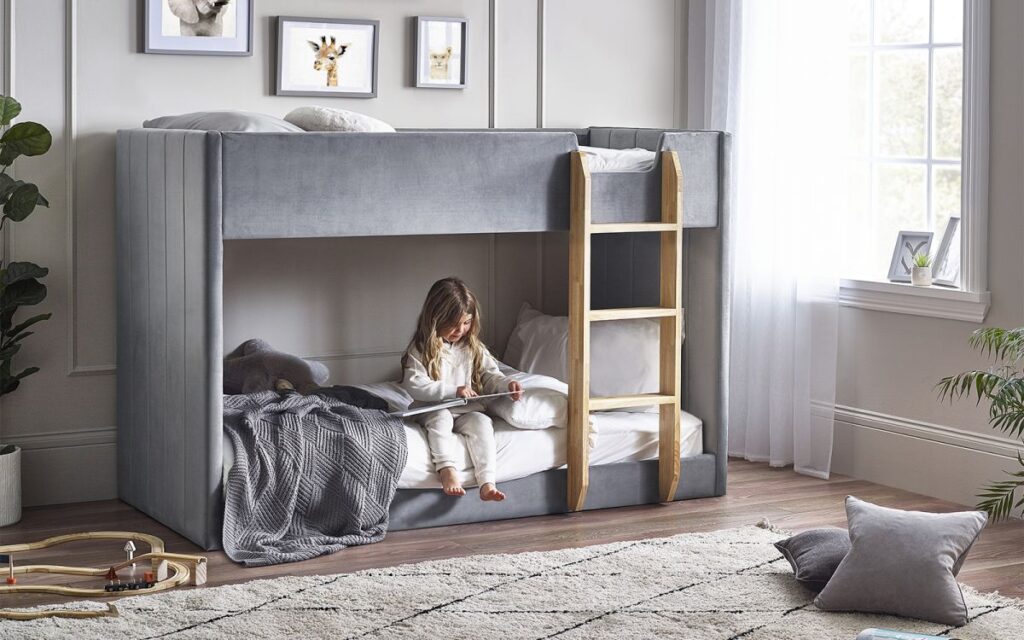Baby, Blog, Bunk bed, High Sleeper
Establishing a Bedtime Routine when moving to a bigger bed
A well-established bedtime routine helps your child fall asleep easily and enjoy a restful night. Bedtime routines reinforce sleep signals and improve sleep quality, making them integral to the transition from cot to bed. Consistency helps children feel secure and reduces confusion, which can lead to bedtime anxiety.
A bedtime routine should include calming activities that signal it’s time to wind down. Brushing teeth, changing into pyjamas, and reading a bedtime story effectively establish a nightly bedtime routine. These activities prepare your child physically for sleep and provide familiarity and comfort.
Visual cues like toddler clocks can enhance the bedtime routine. These clocks signal bedtime and reinforce the nightly routine. Consistent bedtime routines make the transition to a new bed easier and more enjoyable for your child.

Ensuring a Smooth Transition
A smooth transition from cot to bed requires patience and strategic steps. Here are some suggestions to help with the process:
- Introduce the new bed gradually, beginning with short sleep periods like naptime.
- Transition to nighttime sleep only after your child is comfortable with the new bed.
- Use a gradual approach to help your child get used to the new sleeping arrangement without feeling overwhelmed.
By following these steps, you can make the transition smoother for your child.
Reward systems like stickers or verbal encouragement can celebrate successful nights in the new bed and motivate continued progress. Separation anxiety can arise during this transition; offering reassurance and comfort helps ease this challenge.
Patience and consistency are key. Each child adjusts at their own pace, and a calm, supportive environment helps them feel secure and confident in their new bed. Following these tips ensures a successful transition for your little one.
Handling Nighttime Challenges
Nighttime challenges are common during the transition from cot to bed but can be managed effectively with the right strategies. For persistent night-time awakenings, a reward system like a bedtime pass can encourage your child to stay in bed. Parents should maintain a calm demeanour and avoid making a fuss when their child repeatedly gets out of bed.
If your child climbs out of bed, gently take their hand and lead them back, reassuring them with phrases like, ‘It’s time to go to bed – see you in the morning.’ You may need to return your child to bed several times, but positive reinforcement can help.
If your child continuously leaves bed, it may be beneficial to revisit the cot for a while before attempting the transition again. Monitoring your child’s response and making necessary adjustments can effectively manage nighttime challenges.

Involving Your Child in the Process
Involving your child in the transition process can foster excitement and make the change more enjoyable. One way to do this is by letting them choose their bed and bedding. Shopping for these items can enhance excitement about the transition and give them a sense of ownership.
Witnessing the conversion of their cot into a bed can help your child understand the transition better. Involving them in decorating their new room can make the transition more enjoyable and acceptable. Engaging your child in these activities helps them feel more involved, comfortable, and secure in their new sleeping arrangement.
These steps help your child feel more at ease with the transition and create a positive experience for the whole family.



